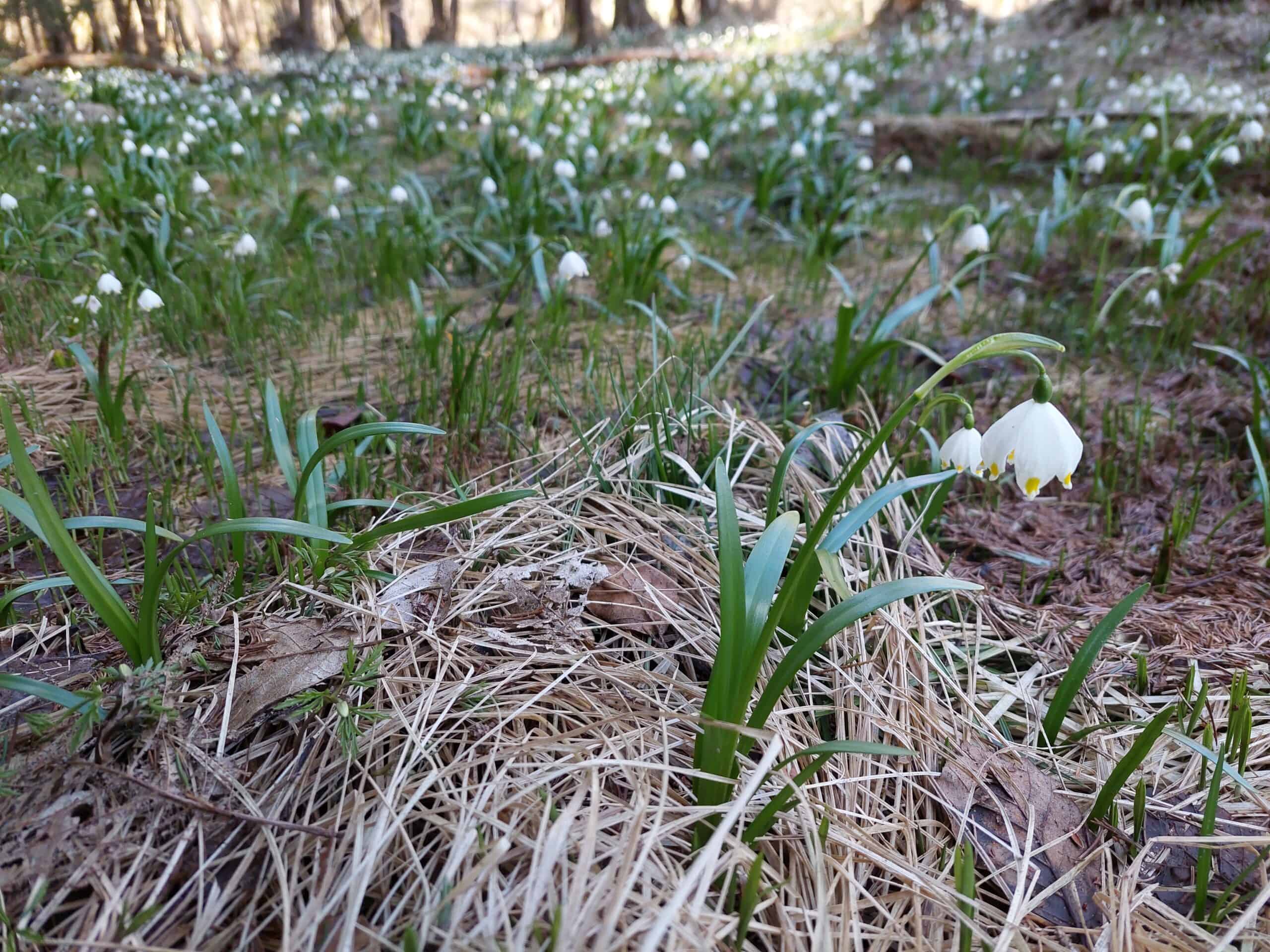Although the spring has begun in most of Slovenia, due to its higher locations, the alpine wetlands are still hidden under a layer of snow. A first rise of temperatures melted the snow and thus enabled access to the high alpine wetlands that we want to restore in the I-SWAMP project. The IRNC employees working on the project, together with a representative of the Slovenia Forest Service (Regional unit Slovenj Gradec), visited two alpine wetlands, the headwaters of Helenski potok and Dolga brda – marshy valley. We assessed the current state of wetlands in the field and planned the implementation of monitoring and restoration measures.
The first project area is the headwaters of Helenski potok (slo. Helenski potok – povirje) where you can find marshes and smaller fragments of bogs. Here we can find rare orchids, such as marsh helleborine (Epipactis palustris), heath spotted-orchid (Dactylorhyza maculata) and eagleaf twayblade (Neottia ovata, formerly Listera ovata). This area is also home to one of the last swamp populations of a rare butterfly: the marsh fritillary (Euphydryas aurinia). In last decades, due to abandonment of farming, the marshes were overgrown by shrubs and trees. In I-SWAMP project we want to remove shrub and tree overgrowth and thereby improve the habitat of rare and endangered species.
The second project area is marshy valley in Dolga Brda (slo. Dolga Brda – močvirna dolina), where we can also find many rare species associated with wetlands. Here grow the bogbean (Menyanthes trifoliata), marsh cinquefoil (Potentilla palustris), heath spotted-orchid (Dactylorhyza maculata) and the early marsh-orchid (Dactylorhiza incarnata). In the spring we can find two species of crayfish, european crayfish (Astacus astacus) and stone crayfish (Austropotamobius torrentium), and two rares species of dragonflies Balkan goldenring (Cordulegaster heros) and Sombre goldenring (Cordulegaster bidentata). Measures are being planned in this area as well to restore the wetlands that are disappearing faster and faster.



